Top 10 Easy and Quick Raksha Bandhan Recipes!
A brother-sister relationship is unique among all other relationships. Every year, Indians celebrate Raksha Bandhan to acknowledge this unique tie. It will be observed on August 30th, 2023 this year. Sisters bind rakhi, a holy thread, around their brother's wrist during this festival to ensure his wealth and well-being. In exchange, the brothers promise to shield their sisters from all harm. After this rite is complete, the entire family gathers to have a sumptuous meal. No feast or event in India is complete without indulgence in sweets. After all of that, we present to you a list of quick and simple Indian desserts that are ideal for commemorating this important event. You should not worry about anything, whether you are low on ingredients or short on time. These delicacies are ideal for any occasion. Therefore, let's begin with the recipes. Look down below.
1. Barfi
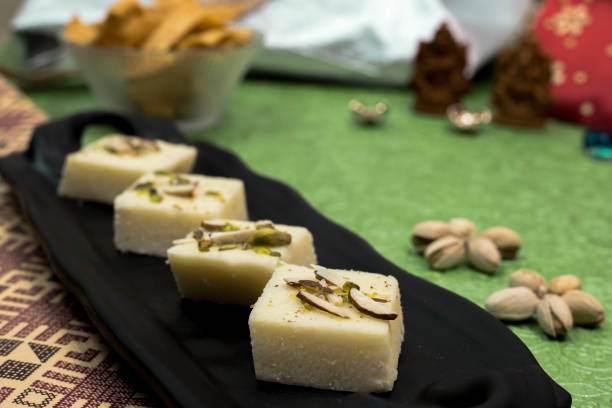
For this dish, full cream milk is first and foremost required. Do not even try it with skim milk because it will take longer to evaporate and will have less solids. Second, be careful not to overcook the burfi mixture if you want a moist barfi. The quantity listed here would result in a damp one. However, if you overcook it, the burfi could turn quite chewy. Finally, you can garnish this barfi with your favourite dry fruits. The combination of pistachios and almonds is my particular fave. But you may also include cherries, tutti frutti, peanuts, and cashew nuts.
2. Bhel
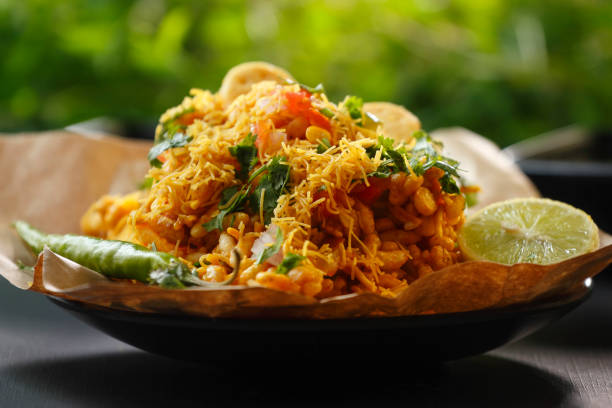
The puffed rice, potatoes, onion, tomato, coriander, peanuts, and green chile should all be combined in a big bowl. Depending on your personal taste preferences, add the chutney. The bowl's contents should be combined. Salt to taste, then mix one more. Add the sev and papdi as garnish. Serve and consume right away. Enjoy. Try adding 1/2 to 3/4 teaspoons of chaat masala when combining the puffed rice, peanuts, potatoes, onion, tomato, coriander, and green chile for an added flavour boost.
3. Dahi Vada
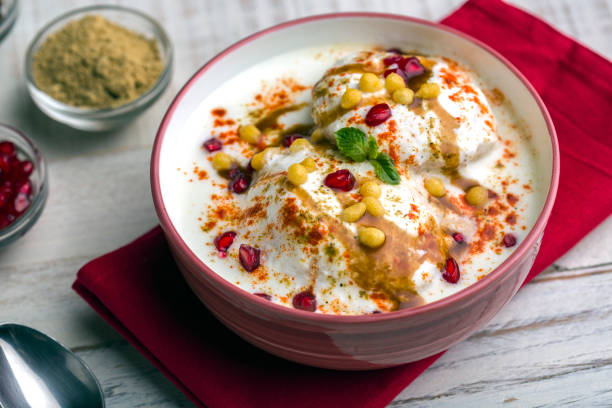
One such delicious and spicy delicacy that becomes smooth and soft when covered in creamy and sweetened yoghurt is urad dal vada. Having said that, I have dunked it in hot water before dipping it in curd so that it becomes instantly soft and the extra oil is washed away. In order to make it even softer, this method is used by hotels or street vendors. Additionally, hastening the process of vada's softening is another benefit of soaking in hot water. For instance, because creamy curd is thicker than water, it takes twice as long for vadas to soak up and become soft.
4. Paratha

A nutritious recipe for paratha that is loaded with vegetables like carrot and radish. Even though you can add a sabzi of your choice or enjoy it with a bowl of curd and some pickles on the side, mixed veg parathas are a complete meal on their own. Lunch-worthy parathas with a mixed veggie filling, moderately spiced masala, and crisp-fried outside. From the dough, form little rounds. The masala should be sprinkled on after you roll it into the shape of a parantha. Now fill the centre with stuffing and fold. Roll it once more and lightly cook it on a griddle while rotating it. Once finished, serve with Achar, Saunth, Sita Phal ki Subzi, or Potato Subzi.
5. Malai Kulfi
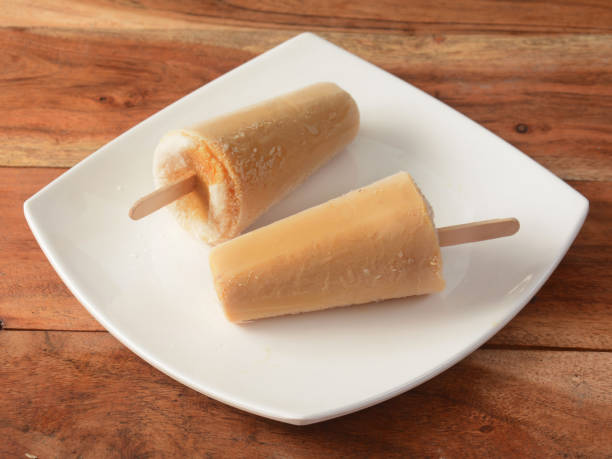
Take 1 litre of full-fat milk in a sauce pan, skillet, or kadai to start. Use a large, heavy pan or kadai to prevent milk from spilling over or burning from the bottom. Bring milk to a boil over low heat or a low flame. Continue to remove the dried milk solids from the sides and re-incorporate them into the milk. Make sure to whisk and scrape the milk frequently to prevent burning or browning on the edges as well as the bottom. There will be some malai in the milk when it thickens. I had to wait 25 minutes after the milk first boiled to reduce it to one-third of its original volume because I was cooking on an induction hob. The time may also change based on the milk's quality, the pan's quality, and the flame's intensity.
Add 1/3 cup sugar while maintaining a low flame. To dissolve the sugar, stir. the powdered cardamom, 14 teaspoon. Add a few strands of saffron after that. Then stir in 2 teaspoons of sliced or chopped almonds (badam). Afterward, add 2 to 3 tablespoons of sliced or chopped pistachios (pista). add 2 tablespoons of cashews that have been chopped. In the event that you're using khoya or mawa, you can add these now, after the cashews. Milk powder might also be included. Before adding, simply grate the mawa or khoya. 2 teaspoons of kewra water or rosewater should be added. Mix thoroughly. Cover the liquid and allow it to cool to room temperature. Once prepared, pour the malai kulfi mixture into kulhads, kulfi, popsicle or matka moulds. With lids or aluminium foil, carefully cover. Malai kulfi should be frozen for 7–8 hours or overnight.
6. Pasta
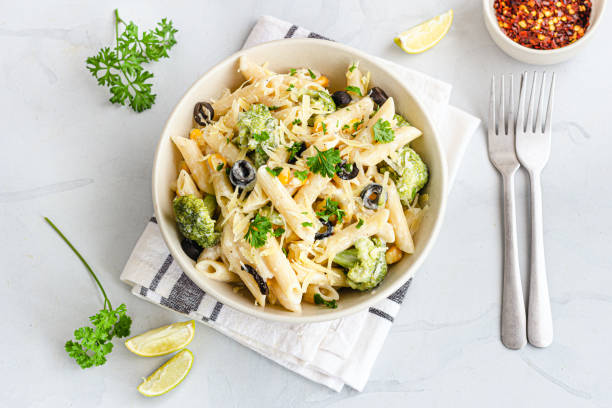
Follow the directions below or the instructions on the package when boiling raw pasta; In a deep sauce pan, add 4-5 cups of water and bring to a boil over medium heat. Add 3/4 cup Penne pasta and 1/2 teaspoon salt as it begins to boil. Make sure they are cooked but not overly soft by boiling them. It should take 10 to 12 minutes. Take one spaghetti and eat it with a fork to see if it is cooked or not. It is cooked if it is only slightly firm to biting. More cooking is necessary if the food is too tough to bite. Heat 1/2 teaspoon oil in a skillet or kadai over a high flame while the pasta is cooking. Add 1/4 cup of chopped carrot, 1/4 cup of chopped green and red capsicums, 1/4 cup of chopped broccoli, and 1/4 cup of salt.
For about two to three minutes, stir and sauté the vegetables until they are barely cooked but still crunchy. Transferring them to a plate after turning off the flame. In the same pan or kadai, melt 1 12 tablespoons of butter. 30 seconds later, add 1/2 teaspoon of finely sliced garlic. 2 tablespoons of maida (all-purpose flour) should be added. 112 cups milk should be added gradually while being continually whisked. Add a bit of salt, a quarter-teaspoon each of oregano and red chilli flakes, as well as a pinch of black pepper powder. Include pasta and sautéed vegetables.
7. Pakoda
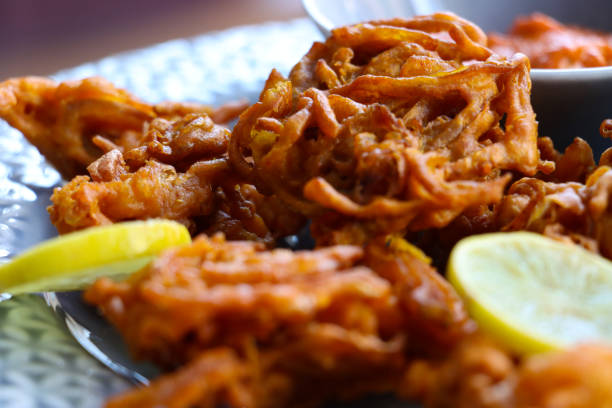
Onion should be placed in a big bowl. Add salt, ginger, curry leaves, red chilli powder, gramme flour, rice flour, baking soda, and coriander leaves. Mix all the ingredients thoroughly so that the sliced onion is thoroughly covered in flour batter before gradually adding water (about 1/4 cup). If more water isn't necessary, don't add it; if the batter is too thin or watery, the pakodas won't become crispy. Over a moderate burner, heat oil in a deep pan. By placing a pinch of the mixture into hot oil and watching it immediately rise to the surface, you can determine whether the oil is hot enough for deep frying. Take a tiny amount of the batter in your palm and delicately drop three or four small fritters into the oil. Deep-fry them until they turn golden brown, stirring every so often to ensure even cooking and a moderate flame.
8. Besan Ladoo
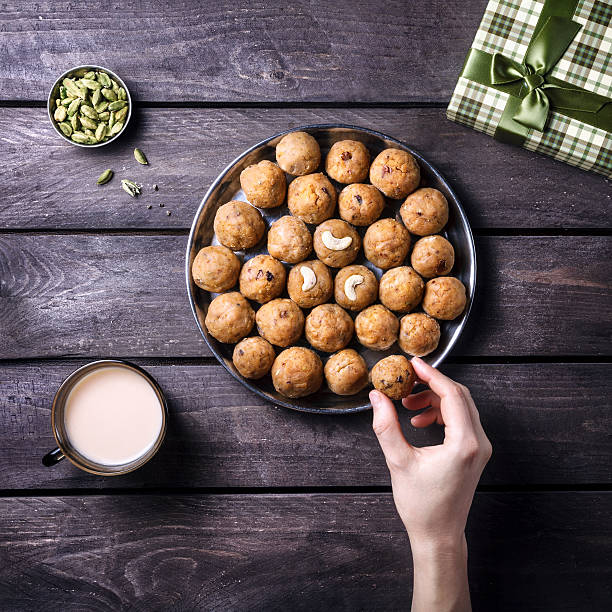
A medium, heavy-bottomed pan should be filled with ghee and besan. Slowly roast the besan flour on low heat, stirring frequently with a spatula. Continue to whisk consistently and break up any lumps that first appear. The flour will begin to soften and turn fluffy after about 10 minutes. Roast the flour for a further 10 to 15 minutes, or until it turns a pale golden brown. The ghee will now begin to separate at this point, infusing the kitchen with a lovely aroma.
Remove the mixture into a basin and turn off the heat. By doing this, the besan won't be overcooked. The goal is to have it feel lukewarm to the touch after about 15 minutes of cooling. Saffron, cardamom, nutmeg, and pistachios should be added. Mix in the powdered sugar thoroughly. Then, as you massage it with the palms of your hands, the ghee begins to release, causing the mixture to come together. Using two to three tablespoons of the mixture at a time, begin squeezing and forming it into spheres. Repeat with the rest of the mixture.
9. Paneer Tikka
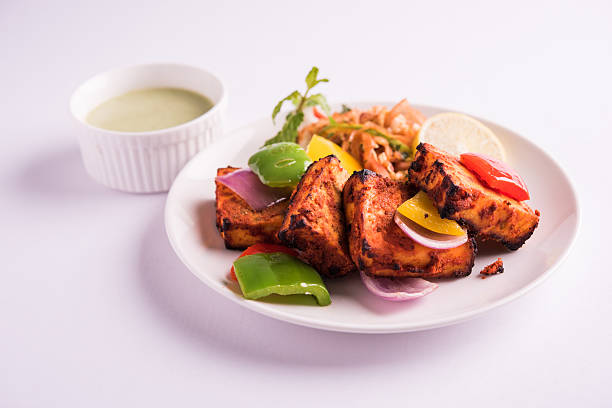
Set a fine-mesh strainer inside a small bowl and line it with muslin or cheesecloth. Add yoghurt, then let it drain for 15 minutes. Throw away fluids. In a bowl, combine the yoghurt that has been drained with the ginger-garlic paste, lemon juice, salt, turmeric, chile powder, cumin, and garam masala. Mix thoroughly before adding paneer, onion, and green bell pepper. For one hour, marinate. Lightly oil the grill grate and preheat the grill to medium heat. Put bell pepper, onion, and paneer that has been marinated on metal skewers. Grill for 6 to 8 minutes, or until cheese is browned and vegetables are tender. Grill for an additional minute after brushing with vegetable oil. Combine green chutney and onion rings, then serve with skewers.
10. Mango Shake

2 ripe, sweet, medium-sized mangoes should be rinsed and dried. Trim and peel them. Throw the stones away. Mangoes should be cut and added to the blender jar. Including 1.5 cups of whole milk. Milk can be served either cold or warm. At this point, you can add 1 to 3 teaspoons of sugar. I didn't add any sugar because the alphonso variety of mangoes I chose were already very delicious. Add two or three ice cubes. Ice cubes are not required. until smooth, blend. Mango pieces shouldn't be present in the shake. This milkshake is thick. You can add more milk for a milkshake that is a little thinner. Examine the flavour. If the mango milkshake isn't sweet enough, add one to three tablespoons of sugar and combine the mixture once more to incorporate the sugar. You can use 1 to 2 tablespoons of honey, palm sugar, coconut sugar, brown sugar, or jaggery for the sugar. Serve mango milkshakes immediately after pouring them into glasses. If you'd like, top the mango shake with some finely chopped almonds, whipped cream, or a scoop of mango or vanilla ice cream.


















